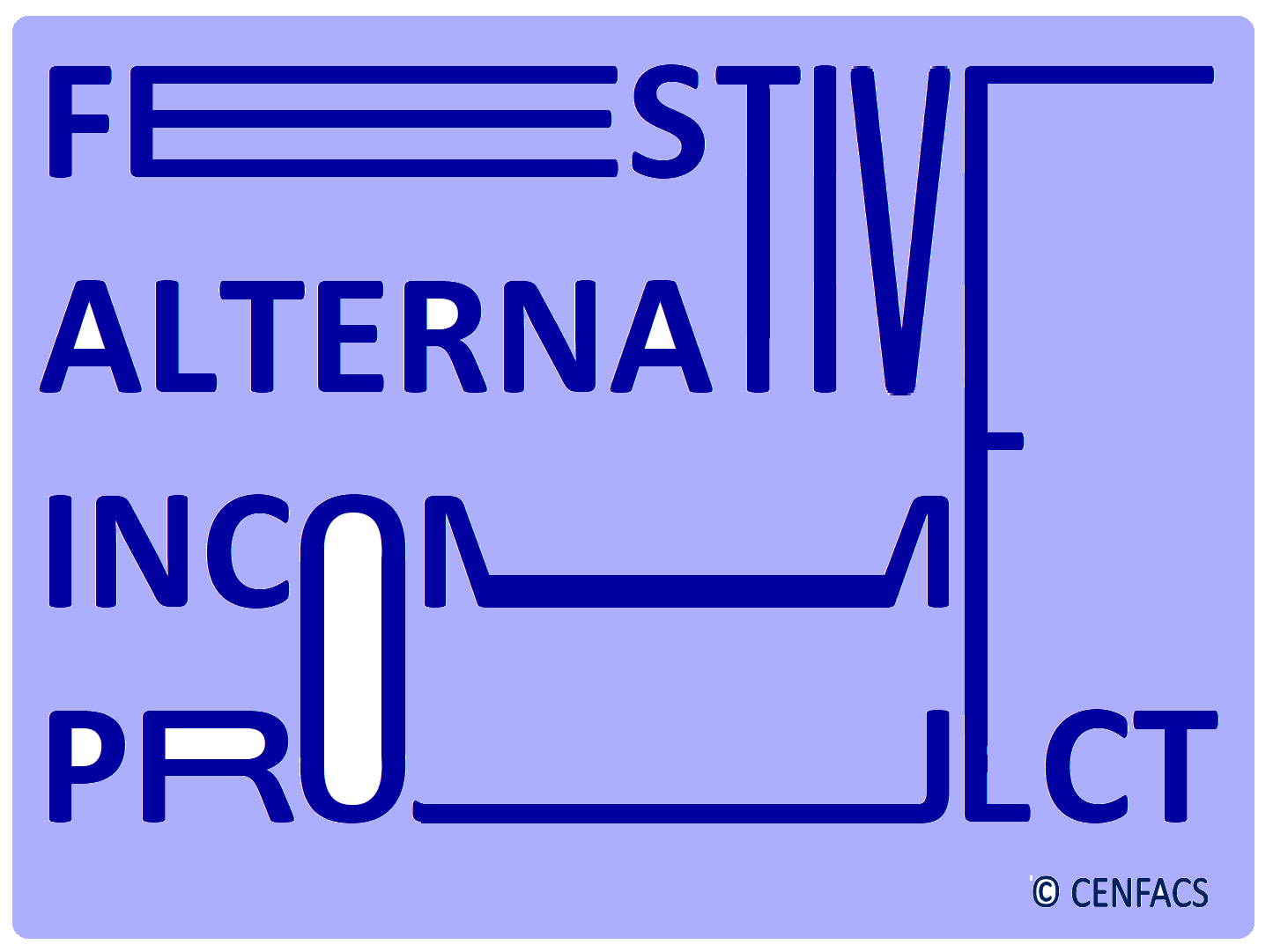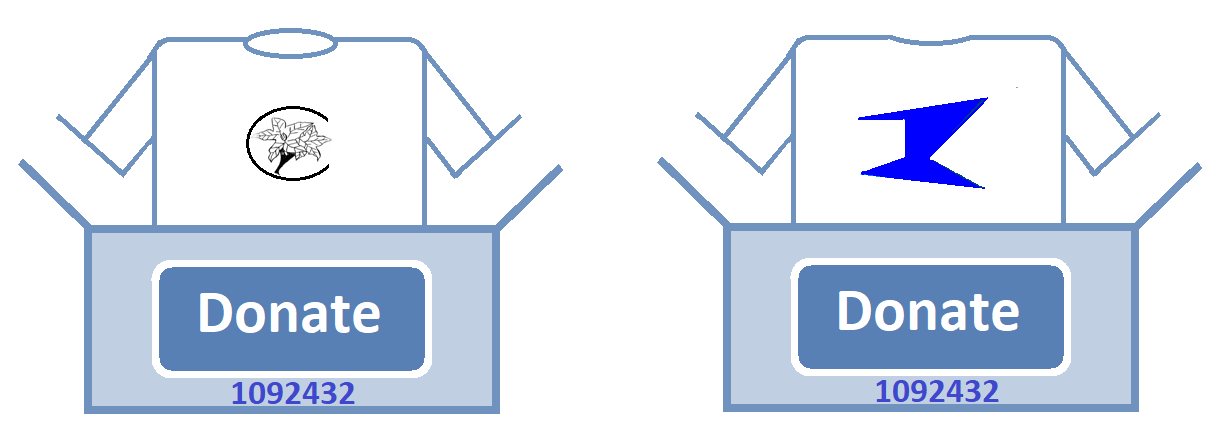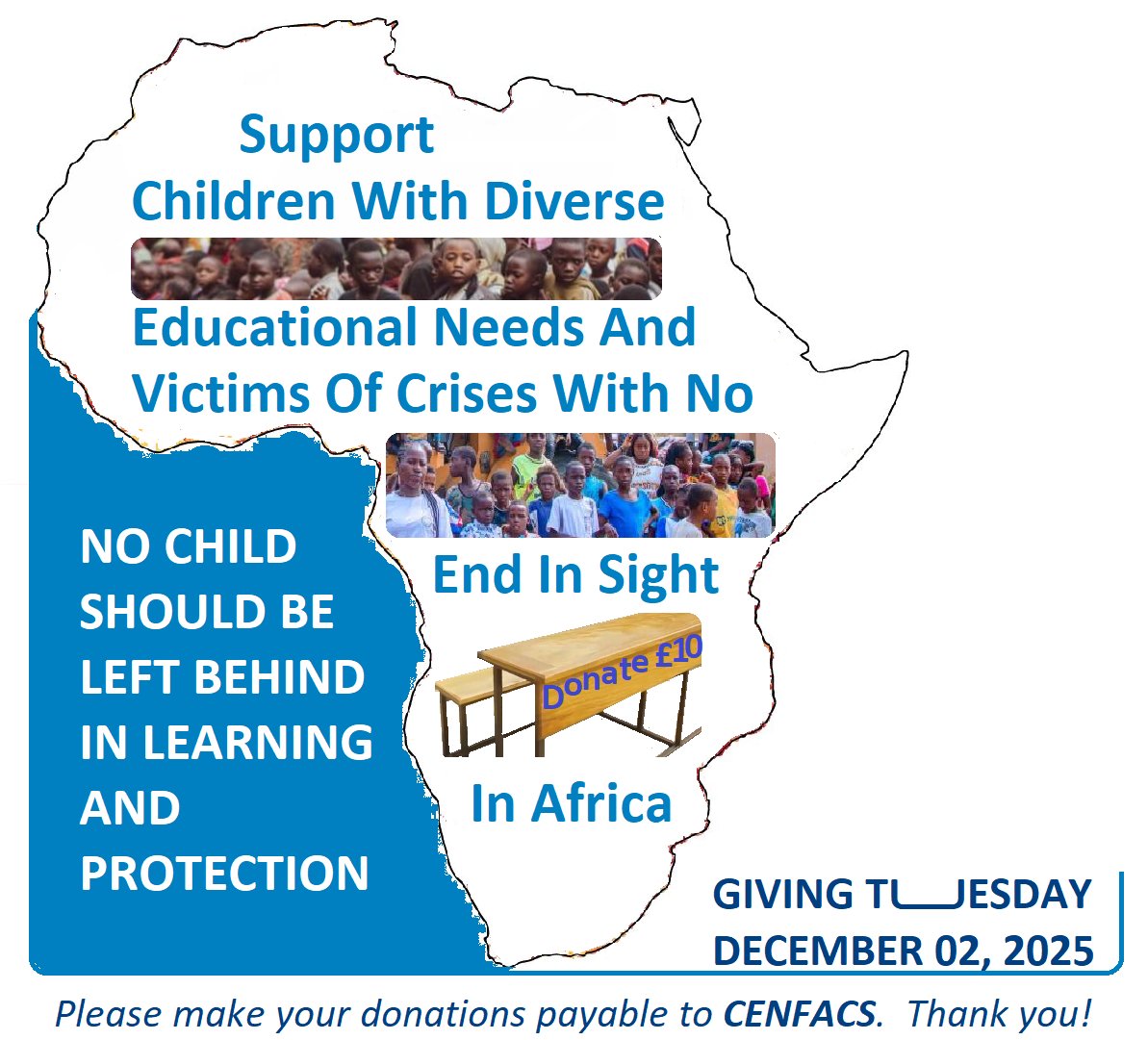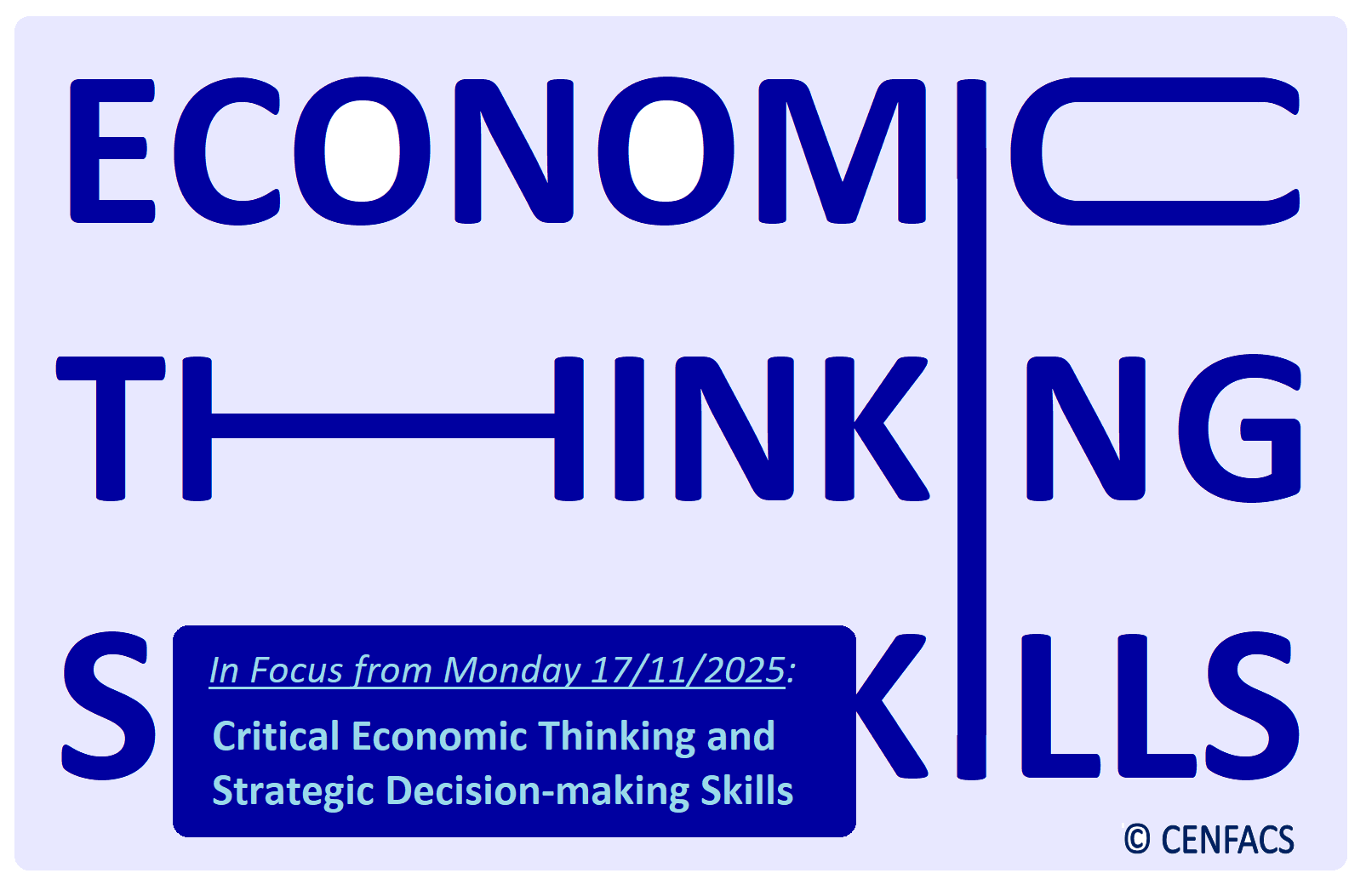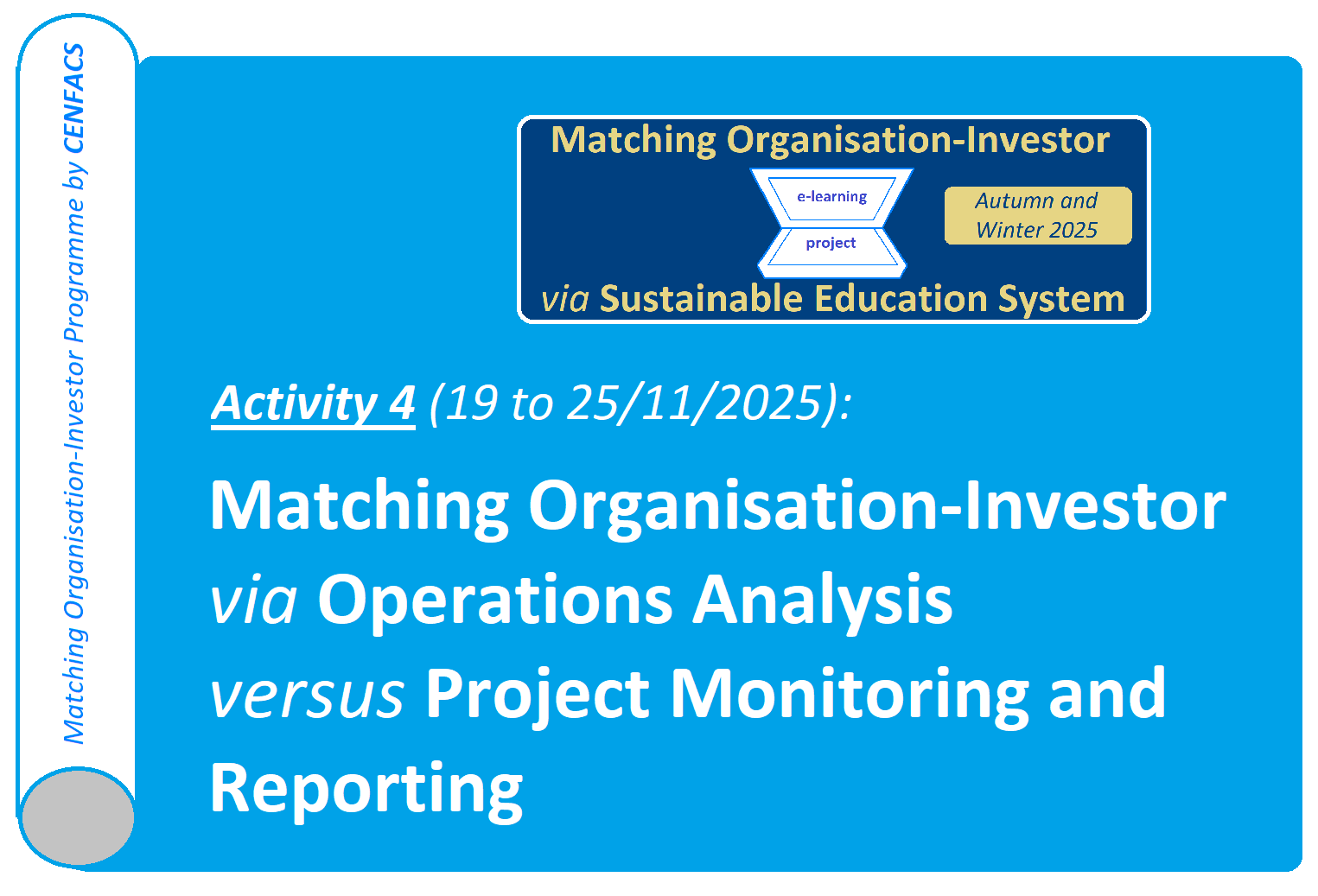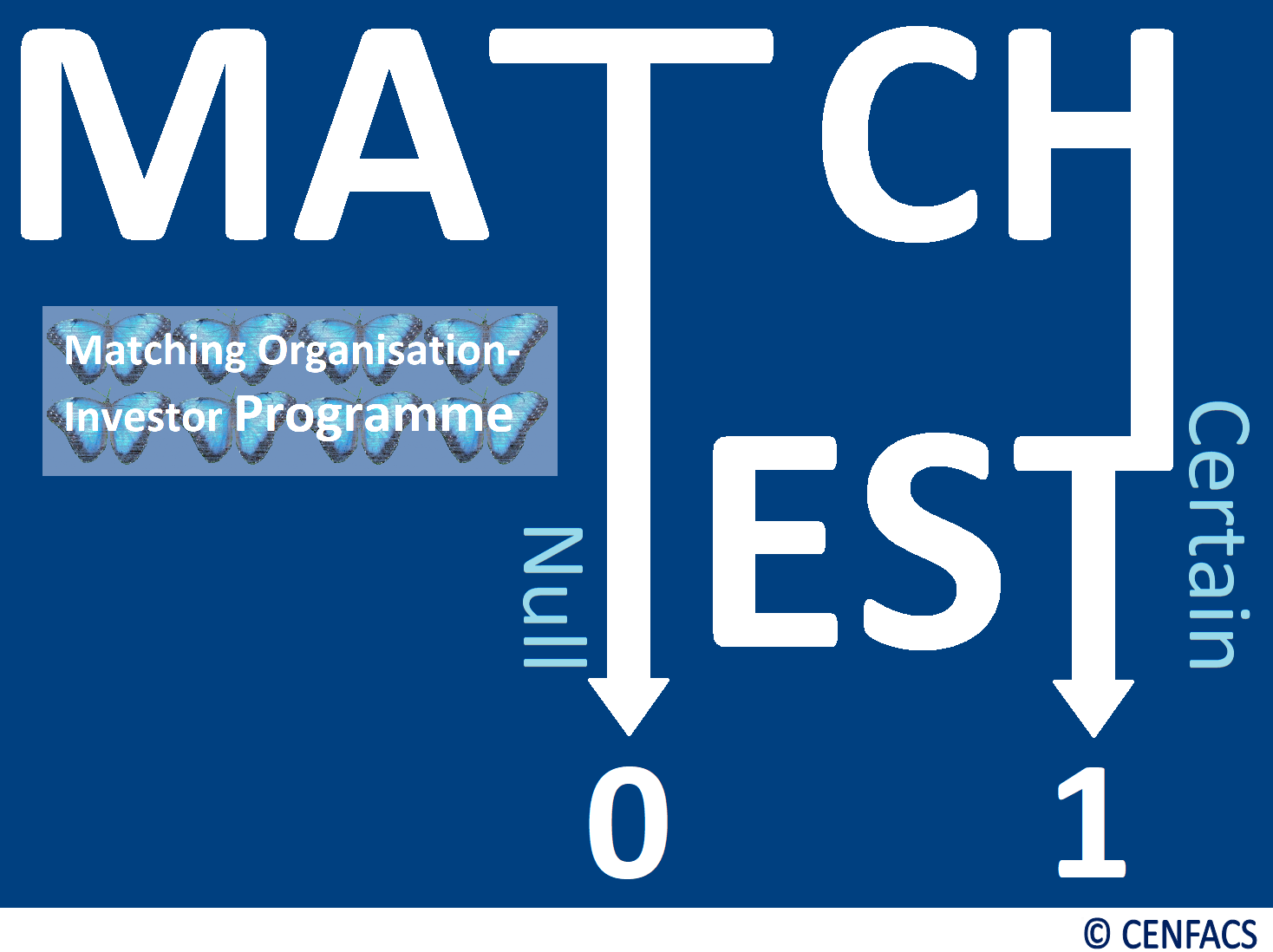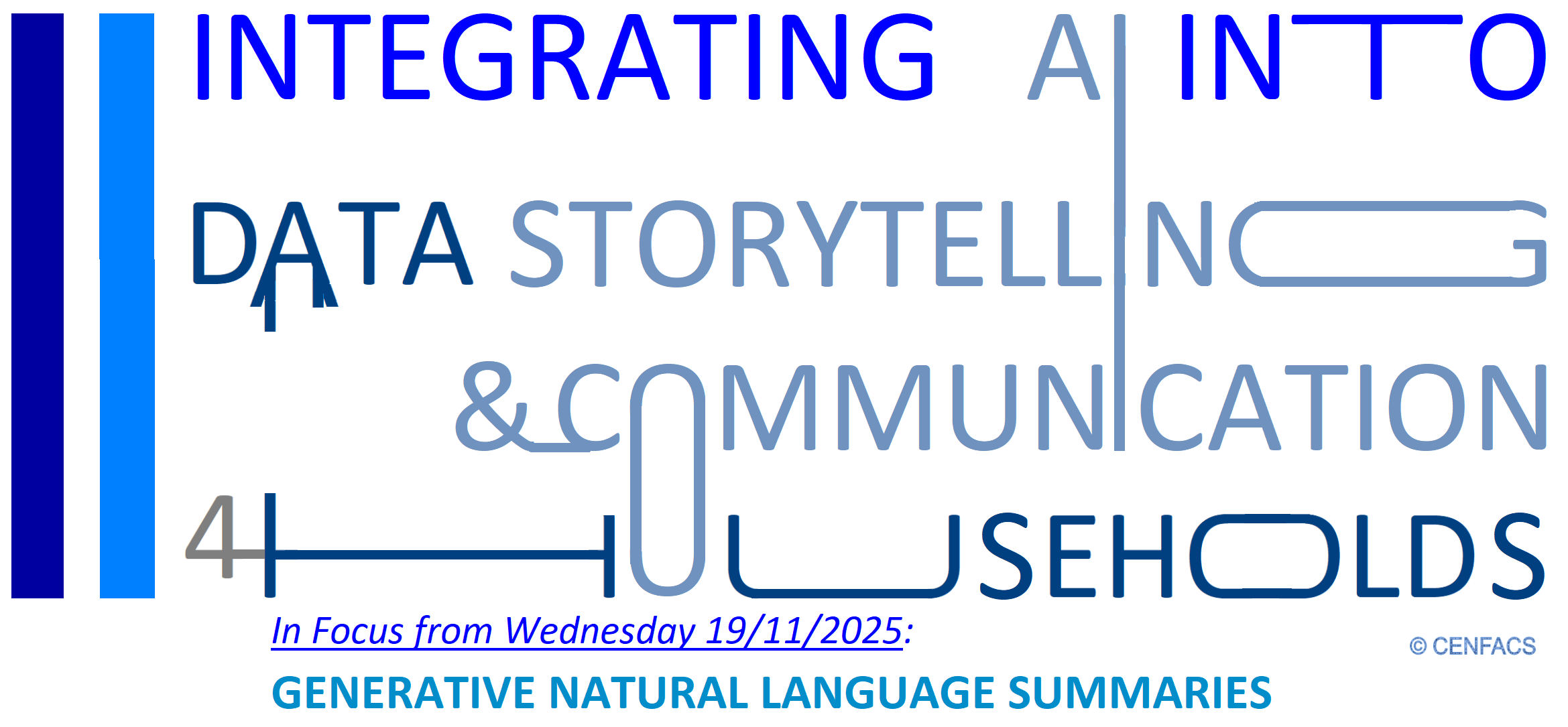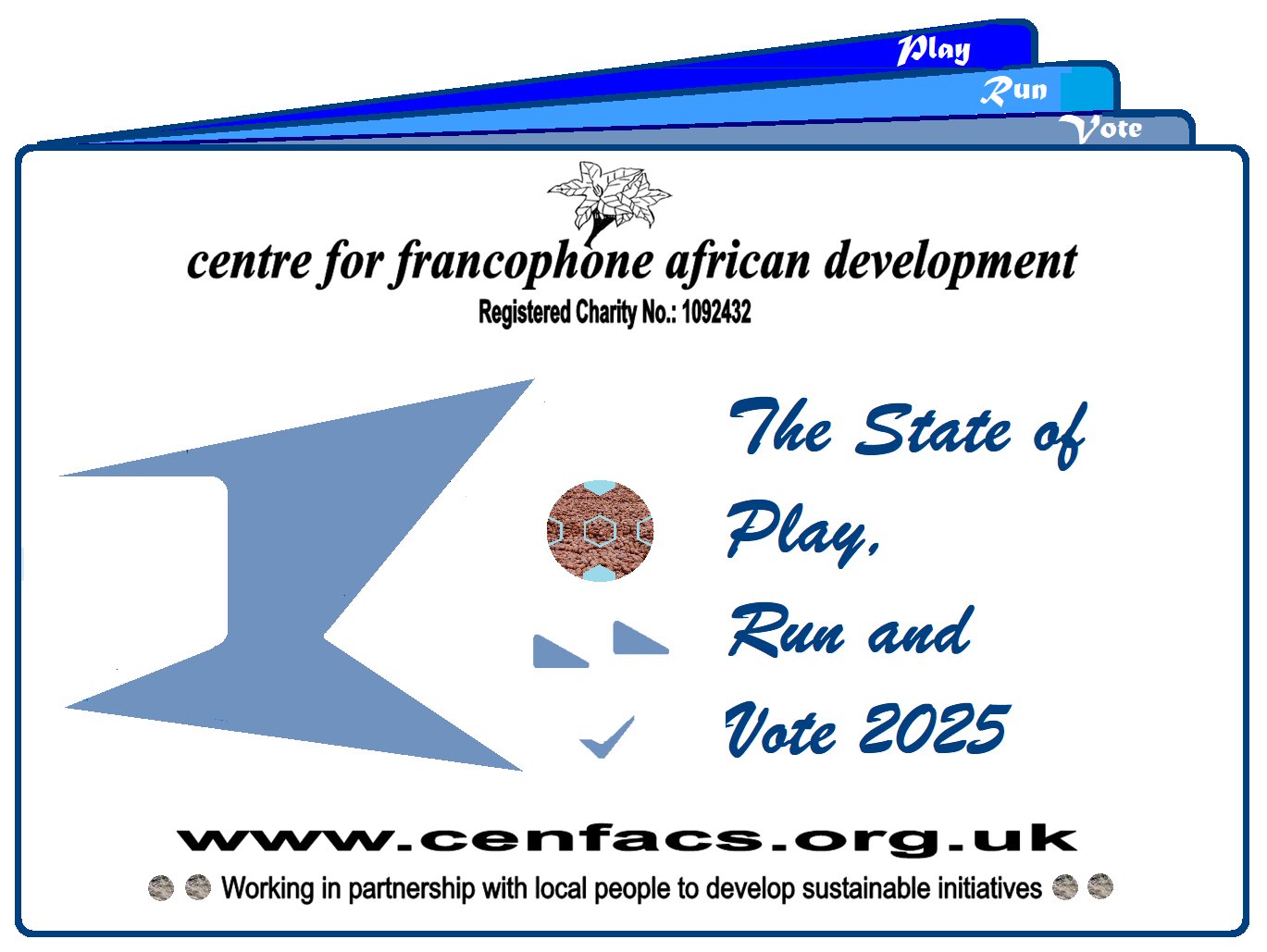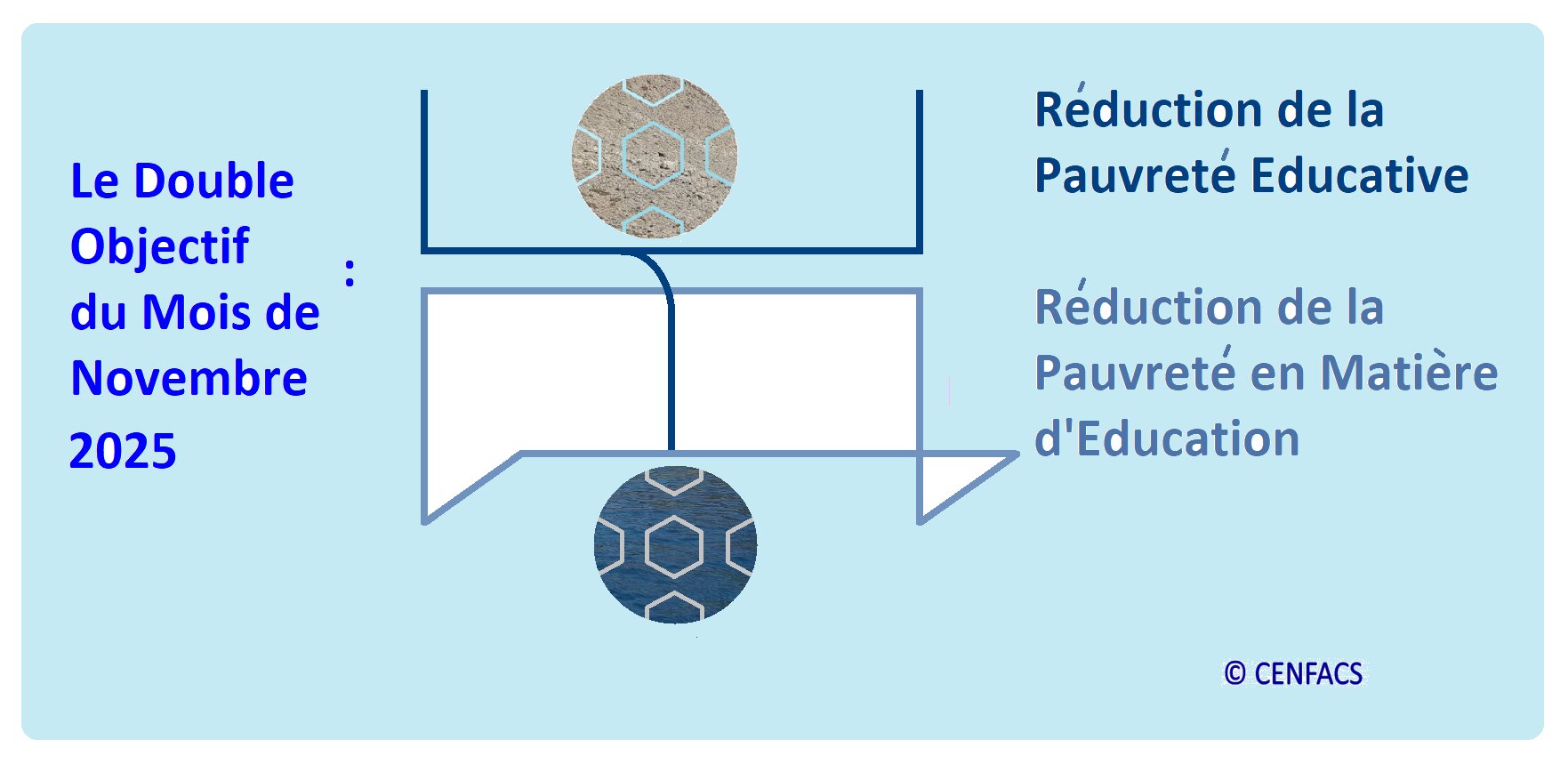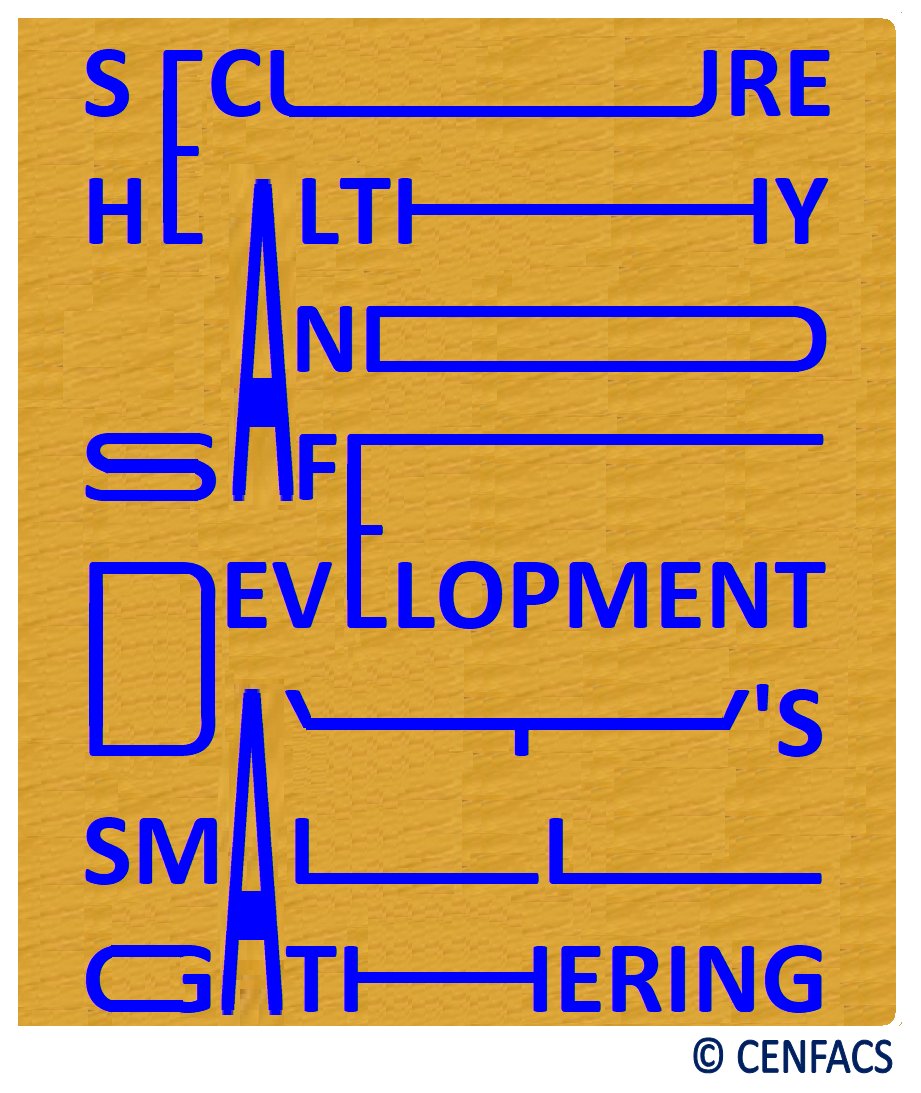Welcome to CENFACS’ Online Diary!
19 November 2025
Post No. 431
The Week’s Contents
• Festive Alternative Income Project
• Support Children with Diverse Educational Needs and Victims of Crises with No End in Sight in Africa
• Economic Thinking Skills or Economics Skills Development – In Focus from Monday 17/11/2025: Critical Economic Thinking and Strategic Decision-making Skills
… And much more!
Key Messages
• Festive Alternative Income Project
Festive Alternative Income Project (FAIP) is part and the continuation of the contents of the 2025 Edition of CENFACS’ Festive Income Booster, which has been about Festive Alternative Income Sources (FAIS). Indeed, after turning your ideas, skills and hobbies into a particular FAIS, you may want to take a further step in translating this FAIS (that is, an activity or method you would like to use to generate additional income during the festive season) into a specific undertaking or plan or project to be created to implement that income source. To make this translation effective, one needs to understand and follow project lifecycle, no matter how big or small this method or activity is.
In this post, we are going to provide a blueprint in terms the steps or stages that some of users or supporters may take in order to make their FAIS become a reality or a successful story of this year end. We are going to elaborate on the different steps or stages that their chosen FAIS needs to take although different ideas or income sources can have different types of project proposals. In this presentation, we are going to work with them or help them to implement their idea by outlining the steps, time, and resources they need to achieve their festive financial goal.
This presentation is aimed at supporting individuals or households making the CENFACS Community and sister communities in the UK. It does not target organisations in the UK that would like to set up an alternative income project for their users. However, our Africa-based Sister Organisations can use the recipes provided since we act as their umbrella organisation in the UK.
We hope that those who would like to translate their festive alternative income source (that is, a general festive category for a type of income that is not their primary job) can get in touch with CENFACS so that we can work together to smooth this translation or transformation process for them into a festive alternative income project (that is, a specific actionable plan to establish such source).
We have given key highlights about this FAIP under the Main Development section of this post. These highlights can be customised and contextualised to a particular FAIS.
• Support Children with Diverse Educational Needs and Victims of Crises with No End in Sight in Africa
Children in numerous African countries are victims of crises, experiencing violence, displacements, starvation, and a loss of education. Major hotspots include Sudan, the Lake Chad Basin, Cameroon, Mozambique, and parts of East Africa, where conflict and environmental factors like drought and famine have created devastating situation. Children are at risk of being used by armed groups , enduring severe food shortages, and suffering from a long-term trauma from the violence they witness and experience.
Additionally, children with diverse educational needs in Africa include those with disabilities, learning differences, and those facing disadvantage due to poverty, gender, language, and displacement. These children face significant barriers to education , with children with disabilities being particularly vulnerable to exclusion from school, which can be compounded by either factors like poverty, and being female.
The following data speaks about the conditions these children.
According to the data from UNICEF (1),
“Some 51 per cent of all African refugees are children, totalling more than 4.5 million (as of end of 2023)”.
Also, UNICEF (2) states that
“Despite improved enrolment rates across the region [Africa], children’s access to education is similarly dire, with nearly 47 million children out of school“.
Likewise, ‘reliefweb.int’ (3) argues that
“638,000 people in Sudan – half of which are children – face catastrophic hunger and a 3.8 million children in Sudan were found to be just one step away from catastrophe in IPC4 (Integrated Food Security Phase Classification ) [or emergency]”.
What’s more, the African Committee of Experts on the Rights and Welfare of the Child (4) indicates that
“In many countries in Africa, children with disability are 49% more likely to have never attended school than other children… Even once in school, children with disabilities are 42% less likely to have foundational reading and numeracy skills, 41% more likely to experience discrimination, and 20% less likely to expectations of a better life“.
Additionally, ‘unesco.org’ (5) contends that
“Although 75 million more African children are enrolled in school today compared to 2025, the number of out-of-school children has increased by 13.2 million to over 100 million during the same period”.
Furthermore, UNICEF (6) states that
“Unprecedented climate-induced shocks, recurrent disease outbreaks, armed conflict and displacements compounded by significant macroeconomic challenges threaten the lives of 51 million children in Eastern and Southern Africa”.
All these children need support. The support can address both educational barriers and deep-seated trauma and instability. And a donation for them can provide access to quality education, specialised support and resources, leading to improved skills, greater self-esteem, and more opportunities for these children to thrive and become leaders in their communities. Donations can help fund teacher training, build accessible schools, supply necessary learning materials, and offer both in-school and after-school support. This investment will help break cycles of poverty, foster inclusive communities, and give vulnerable children a brighter future.
So, there is still a deep, intense and urgent educational need from these children in many of parts of Africa.
This appeal, which is worded as or used the slogan ‘NO CHILD SHOULD BE LEFT BEHIND IN LEARNING AND PROTECTION IN AFRICA’, has already started and will make CENFACS‘ fundraising campaign for Giving Tuesday on 02 December 2025.
We would like people who may be interested in our philanthropic mission to join us in this campaign to Support Children with Diverse Educational Needs and Victims of Crises with No End in Sight in Africa.
We are asking to those who can to support these Educationally Needy Children and Victims of Polycrises via this campaign, not to wait the Giving Tuesday on 02 December 2025.
They can donate now since the needs are urgent and pressing.
Even a small donation can lead to a BIG impact.
For instance, a £7 donation to children victims of crises can provide vital support to children in African crisis zones, such as
σ Contributing to life-saving treatments for severe malnutrition
σ Providing a basic hygiene kit to a displaced community where children are included
σ Providing educational materials such as a safe space for children to learn, play and heal from trauma.
Likewise, another £7 donation to children with diverse educational needs can help
σ Provide educational resources
σ Contribute to learning materials
σ Support a portion of specialized needs
σ Provide a school supply box for a child
σ Contribute to teacher training and classroom supplies
σ Support a portion of the cost for a child with special needs.
To donate, please get in touch with CENFACS.
• Economic Thinking Skills or Economics Skills Development – In Focus from Monday 17/11/2025: Critical Economic Thinking and Strategic Decision-making Skills
To tackle this third skills set – that is, Critical Economic Thinking and Strategic Decision-making Skills – we have organised our notes as follows:
σ The meaning of critical economic thinking and strategic decision-making;
σ The skills that households need to apply critical economic thinking and make strategic economic decisions;
σ The areas where CENFACS can work with the community members to develop their economics skills;
σ Summary of the Economic Education Month Activity of the Week.
Let us look at each of these items.
• • The Meaning of Critical Economic Thinking and Strategic Decision-making
Let us start with critical economic thinking, then deal with strategic decision-making after.
• • • What is critical economic thinking?
According to ‘principlebasedmanagement.com’ (7),
“Economic thinking refers to the principles and concepts we use from economics, which is the study of choice in using scarce resources. Economic thinking is the foundation for making good decisions because it helps us understand reality, avoid decision traps, generate alternatives and analyse trade-offs (what we give up to gain some thinking) – so we can create the greatest value for ourselves and others”.
This economic thinking can become critical (that is, discerning, perceptive and accurate) as it leads to question assumptions, to analyse data, and think logically. It is also a skill that involves understanding and interpreting the world around us through the lens of economics. It is a way of making sense of the choices we face daily, whether in personal decisions or in understanding the broader economic landscape. It is an essential skill for making rational, informed decisions and navigate the complexities of life in an interconnected and dynamic world.
• • • What is economic strategic decision-making?
To understand economic strategic decision-making, let us refer to what Harvard Business School Online (8) argues about it, which is:
“Economic strategic decision-making skill is the ability to make informed, timely, and impactful decisions that shape the direction of an organisation. It involves analysing complex situations, data, and trend, evaluating alternatives, and selecting the best course of action. This skill is crucial for both personal and professional environments, as it requires an intuitive understanding of resource allocation and the ability to anticipate future trends and challenges”.
This skill is essential when making decisions using findings from analysis and your understanding of economic concepts. It encompasses the ability to critically think about a complex problem and plan for the future. It also includes communication, analytical, problem-solving, planning and management skill. It is part of the Skills Development Month. Those who would like to develop this skill with us, they are welcome to contact CENFACS.
• • Household Critical Economic Thinkers’ and Economic Strategic Decision Makers’ Skills
What are the skills that households need to apply economic critical thinking and make economic strategic decisions?
We have already mentioned some of these skills in the above-given definitions of critical economic thinking and strategic decision-making. We can add more and explain the ones we have already mentioned.
The skills that households need to apply economic critical thinking include the following:
σ Analysing economic data: Understanding how to interpret economic indicators like inflation, gross domestic product (GDP), and employment figures to assess economic performance;
σ Evaluating economic policies: Being able to weigh the costs and benefits of different policy options and consider their potential unintended consequences;
σ Examining assumptions: Questioning the validity of assumptions underlying economic models and theories;
σ Making informed decisions: Making decisions about investments, business starts, and other economic choices based on data analysis and evidence;
σ Identifying biases: Recognizing biases and prejudices that may influence economic decision-making.
These skills are essential for making informed economic decisions, planning for the future and navigating the complexities of the economy. They enable households to make choices that align with their long-term financial goals and contribute to a sustainable and prosperous future.
The skills that households need to make economic strategic decisions are the following:
σ Critically thinking: The ability to form ideas in the mind involving analysis and assessment;
σ Skills to plan for future: The power to make preparations or arrangements for the time to come;
σ Data handling: Proficiency in managing data and interpreting data to make informed decisions;
σ Communication skills: The capacity to clearly convey economic concepts to both specialist and non-specialist audiences;
σ Analytical skills: The capability to analyse economic data and trends at local, regional, national and international levels;
σ Problem-solving skills: The faculty to analyse complex problems and develop effective solutions.
All these economic strategic decisions skills are crucial in handling household economic matters.
• • CENFACS Working with the Community Members on Critical Economic Thinking and Strategic Decision-making Skills
Together with our community members, we can work to improve the ways they analyse economic data, evaluate economic policies, examine assumptions, make informed decisions, and identify biases. We can as well work with in the way they approach critical thinking, plan for future, handle data, convey economic concepts, analyse economic data, and solve economic problems.
Those members of our community who will be interested in working with on the above-mentioned economics skills, they should not hesitate to contact us CENFACS.
• • Economic Education Month Activity of the Week: Economy Advocacy Campaign
The activity is the economic advocacy campaign to prioritise and improve household economic education by focusing on the importance of understanding household economies. The campaign can involve household economy analysis, policy influence, community mobilisation, legal advocacy, etc.
These campaigns are essential for addressing the structural inequalities that keep marginalised groups in cycles of poverty and inability. By educating households about their economic rights and the mechanisms of wealth distribution, advocacy programmes can empower communities to demand fair treatment and improve their economic standing.
For instance, one can encourage families or households or even community leaders to advocate for prioritizing and improving economic education in local schools.
Those who may be interested in this activity can proceed with it. Those who would like to talk to CENFACS about this activity before taking any action, they are free to contact CENFACS.
Those who have any enquiries and or queries about Critical Economic Thinking and Strategic Decision-making Skills, and or Economic Thinking or Economics Skills Development, they can also communicate with CENFACS.
Extra Messages
• Autumn Matching Organisation-Investor via Sustainable Educational System (SES) Project – Activity 4 (19 to 25/11/2025): Matching Organisation-Impact Investor via Operations Analysis versus Project Monitoring and Reporting
• Skills to Integrate Generative AI into Household Data Storytelling and Communication – AI Integration 3 from Wednesday 19/11/2025: Generative Natural Language Summaries
• The State of Play, Run and Vote 2025
• Autumn Matching Organisation-Investor via Sustainable Educational System (SES) Project – Activity 4 (19 to 25/11/2025): Matching Organisation-Impact Investor via Operations Analysis versus Project Monitoring and Reporting
Both Africa-based Sister Charitable Organisation (ASCO) and Not-for-profit (n-f-p) Impact Investor (FI) agreed on ASCO’s Charity Market Analysis and N-f-p Impact Investor’s Project Execution and Implementation. This agreement means that they can move to the next stage, which is Activity 4.
Activity 4 is about matching ASCO’s Operations Analysis (OA) with N-f-p Impact Investor’s Project Monitoring and Reporting (PMR). This Activity 4 will be approached through the following sub-headings:
σ What Is Operations Analysis?
σ What Is Project Monitoring and What Is Project Reporting?
σ Match Points for ASCO
σ Match Points for N-f-p Impact Investor
σ Reaching an Agreement on the Contents of Activity 4
σ The Match or Fit Test Service.
Let us uncover these sub-headings.
• • What Is Operations Analysis?
Operations Analysis can be approached in many ways, which all end up by saying the same thing. One of its definitions comes from ‘dssresources.com’ (9) which explains that
“Operations Analysis (OA) is the study of operational systems with the goal of identifying opportunities to make improvements and enhance performance. OA is a systematic and scientific analysis and evaluation of problems and issues”.
When looking at the functions of operations analysts, ‘coursera.org’ (10) argues that
“An operations analyst examines a company’s systems and processes to help solve operational problems and ensure things run smoothly… An operations analyst, sometimes called an operations research analyst, analyses an organisation’s systems and procedures to help its management improve how the company functions and eliminate operational problems”.
In its plan for operations analysis, ASCO needs to provide evidence that it will identify problems, collect and analyse data, conduct internal audits, analyse e-learning programmes, develop and implement policies and procedures, research, write reports and share findings.
• • What Is Project Monitoring and What Is Project Reporting?
• • What Is Project Monitoring ?
On the website of ‘plane.so’ (11), project monitoring is defined as
“The process of tracking, reviewing, and regulating the progress and performance of a project to ensure it stays on course and meets the objectives outlined in the project plan”.
The same ‘plane.so’ adds that
“The purpose of project monitoring is to identify any deviations from the plan early and make adjustments to keep the project within its scope, schedule, and budget”.
• • What Is Project Reporting?
To explain project reporting, it is better to start with project report. What is project report?
To clarify the meaning of project report, the website ‘projectmanager.com’ (12) gives the following answer:
“A project report is a document that provides detail on the overall status of the project or specific aspects of the project’s progress or performance”.
Knowing what a project report is, it makes easier to define project reporting. The same website ‘projectmanager.com’ argues that
“Project reporting consists of creating different types of report to track project schedules, project budgets and project progress to keep project stakeholders informed”.
With these definitions in mind, the n-f-p impact investor would expect ASCO to have its project reporting tools ready.
• • Match Points for ASCO
Setting up a SES Project means that there will be problems once this project becomes operational. Because operations analysis is mostly employed by start-ups, ASCO needs to show that it has a plan evaluate potential flaws, loopholes, and the overall feasibility of the idea. This is why ASCO needs to have a plan for operations analysis; analysis which will help detect problems and find solutions to them.
As part of its argument, ASCO can explain that its plan for operations analysis which will contain the way in which it will examine and optimise all processes, identify areas that need improvement and enhance performance.
ASCO needs as well to show the following:
~ It has key performance indicators to track as part of monitoring activities,
~ It will review the project status if there is a need to do so
~ It will assess the quality of deliverables.
• • Match Points for N-f-p Impact Investor
There are many points that the n-f-p impact investor would like to have some answers from ASCO. The n-f-p impact investor wants to know if ASCO will use ‘ProjectManager’ software or any other project management software to create project reports.
Also, he/she would like to know the types of project report that ASCO will produce (e.g., project status reports or project progress reports or risk reports or board/executive reports or cost-benefit reports, resource reports, project variance reports, gap analysis reports, workload report or time sheet report, project budget report or project closure).
In addition, the n-f-p impact investor wants ASCO to explain how it will control costs and keep to its budget, how it will cut down costs, assess the SES Project performance and focus on beneficiary satisfaction.
ASCO needs to answer all these questions, while demonstrating that its operations analysis is in line with the n-f-p impact investor’s approach to project monitoring and reporting. That ASCO has done all of these tasks in order to reach an agreement.
• • Reaching an Agreement on the Contents of Activity 4
The two sides (ASCO and the n-f-p impact investor) of the matching process need to reach an agreement on the contents of ASCO’s OA and n-f-p impact investor’s PMR. If there is a disagreement between ASCO and n-f-p impact investor, this could open up the possibility for a match/fit test. The match/fit test can be carried out to try to help the two sides of the matching process. The match/fit test can also be undertaken if there is a disagreement on any of aspects of the SES Project.
• • The Match or Fit Test Service
As part of the match or fit test, the contents of ASCO’s OA must be matched with n-f-p impact investor’s view on PMR.
The match test (or matched sampling) will help to increase the accuracy and statistical efficiency of the study of the SES Project by carefully selecting subjects for comparison. The purpose here will be to increase the statistical efficiency of the study on SES Project by controlling for confounding variables when forming a sample.
The fit test will assist in determining how well the observed sample data matches a specified theoretical distribution. The fit test will check if the data collected fits a model or an assumed population distribution. So, the purpose of the fit test is to validate or invalidate the statistical model by checking if the sample data follows an expected distribution.
The match can be perfect or close (that is, when every unit is paired with an equivalent unit) in order to reach an agreement. If there is a huge or glaring difference between the two (i.e., between what the investor’s approach to project monitoring and reporting and what ASCO is saying about its operations analysis, between what the investor would like the operations analysis to indicate and what ASCO’s operations analysis is really saying), the probability or chance of having an agreement at this fourth round of negotiations could be null or uncertain.
• • Impact Advice to ASCO and Guidance to n-f-p Impact Investor
Where there could be a disagreement, CENFACS can impact advise ASCO to improve the contents of its operations analysis. CENFACS can as well guide n-f-p impact investors with impact to work out their expectations in terms of project monitoring and reporting to a format that can be agreeable by potential ASCOs.
CENFACS’ impact advice for ASCOs and guidance on impact investing for n-f-p impact investor, which are impartial, will help each of them (i.e., investee and investor) to make informed decisions and to reduce or avoid the likelihood of any significant losses or misunderstandings or mismatches.
• • The Rule of the Matching Game
The rule of the game is the more impact investors are attracted by ASCOs’ operations analysis the better for ASCOs. It means that ASCO’s process must pass the attractiveness test (that is, the evaluation of market’s appeal). Likewise, the more ASCOs can successfully respond to impact investors’ level of enquiries and queries about the SES Project the better for investors. In this respect, the matching game needs to be a win-win one to benefit both players (i.e., investee and investor).
The above is the fourth Activity of the Matching Organisation-Investor via SES Project.
Those potential organisations seeking investment to set up a SES Project and n-f-p educational investors looking for organisations that are interested in their giving, they can contact CENFACS to arrange the match or fit test for them. They can have their fit test carried out by CENFACS’ Hub for Testing Hypotheses.
• • CENFACS’ Hub for Testing Hypotheses
The Hub can help to use analysis tools to test assumptions and determine how likely something is within a given standard of accuracy. The Hub can assist to
√ clean, merge and prepare micro-data sources for testing, modelling and analysis
√ conduct data management and administration
√ carry out regression analysis, estimate and test hypotheses
√ interpret and analyse patterns or trends or insights in data or results.
For any queries and/or enquiries about this fourth stage/activity of Matching Organisation-Investor via SES Project, please do not hesitate to contact CENFACS.
• Skills to Integrate Generative AI into Household Data Storytelling and Communication – AI Integration 3 from Wednesday 19/11/2025: Generative Natural Language Summaries
This third note or AI Integration 3 of the month is about Generative Natural Language Summaries. Indeed, households may not have the technical expertise to interpret raw data or complex visualisations. AI-powered natural language generation (NLG) can help, as this note will show it.
To start this note, it may be appropriate to proceed with the following:
σ Explain Generative Natural Language Summaries
σ Provide Data Skills Relating to Generative Natural Language Summaries
σ Summarise CENFACS’ Work with the Community Members on Data Skills Relating to Generative Natural Language Summaries
σ Highlight the AI Integration Activity for the End of This Week.
Let us uncover each of these items.
• • Explaining Generative Natural Language Summaries
To explain Generative Natural Language Summaries, it is better to start with Natural Language Generation (NLG).
NLG is a subset of artificial intelligence (AI) that transforms structured or unstructured data into human readable text. It is a critical component of Natural Language Processing (NLP) enabling machines to generate coherent and contextually relevant language outputs. NLG is widely used in applications such as business intelligence, chatbots, automated reporting.
Generative Natural Language Summaries (GNLS) are created by advanced AI models that deeply understand and reconstruct the core ideas of a source text into new, original sentences and phrases. This significantly differs from extractive summarization, which only selects and rearranges existing sentences.
GNLS can be useful for households. The latter can leverage NLG to streamline their information management processes. This can make easier to access and interpret data, while leading to better decision-making and improved overall household well-being.
So, GNLS can benefit households by automating the process summarising and organising information. This can include: automated report generation, improved healthcare, and financial insights.
By learning the task of automating the creation of these summaries from Generative AI, this provides household data analysts an opportunity to focus on tasks that require human insights and creativity. But, for households to enjoy these benefits they need possess some data skills.
• • Data Skills Relating to Generative Natural Language Summaries
These are the skills to use Generative AI (e.g., Arria, NLG) for generating natural language summaries (i.e., key insights, trends, and anomalies) from complex dataset.
• • • What data skills do households need to create GNLS?
Households need a combination of skills such as critical thinking, digital literacy, and communication skills to create effective generative AI summaries. This includes understanding how AI works, being able to critically evaluate its output, and using skills like prompt engineering to guide the AI towards households’ desired summary.
To sum up, to generate natural language summaries via AI, it requires some skills which include those to use software and AI tools to automatically gather data, to analyse data, to generate reports without manual intervention, etc.
The above-mentioned skills can help create effective Generative Natural Language Summaries for your family/household.
There are those members of our community who possess these skills. Those who do not have them can work with CENFACS to acquire or improve them.
• • CENFACS’ Work with the Community Members on Data Skills Relating to Generative Natural Language Summaries
CENFACS can work with those who need help and support on data skills to create effective Generative Natural Language Summaries for their families/households so that they can effectively tell and communicate their stories.
Since Skills to Integrate Generative AI into Household Data Storytelling and Communication make up our Data and Insight Advocacy and Skills Project, we can conduct with them basic data and insights analytics using the tools of poverty reduction we have in our box.
Where our capacity is limited in comparison to their demand or specific needs, we can signpost or refer them to relevant data insight and analytics services or organisations that are available on the market and can be accessible to them.
For those members of our community who will be interested in Skills to Integrate Generative AI into Household Data Storytelling and Communication, they can contact CENFACS. CENFACS can work with them to enhance their Data Storytelling and Communication Skills Using Generative AI.
• • AI Integration Activity for the End of this Week: Automated Report and Summary Generation
Those who would like to dive into Generative Natural Language Summaries can try this weekend activity of Generating Automated Reports and Summaries using Generative AI. To do it, they need to understand automated report and summary generation.
• • • What is Automated Report and Summary Generation (ARSG)?
ARSG focuses on using generative AI to create written content that turns complex analytics into plain-language summaries. It involves the use of software and tools to automatically gather data, analyse it, and generate reports without manual intervention. This process streamlines the reporting process, ensuring that data is presented in a timely, accurate, and efficient manner. Automated reports and charts, which are in-depth presentations, pages, or whole documents that can be automatically generated. This approach saves time, reduces human error, and enhances the reliability of the information presented.
Knowing what ARSG is, one can try to create a weekend report with AI for their household.
• • • Creating a weekend report with AI for your household
To create a weekend report with AI, households can follow these steps:
a) Prepare data by organising and cleaning its sources
b) Choose AI tool that fits your household reporting needs
c) Set up workflow to trigger automatic reports
d) Leverage AI for analysis
e) Review and continuously refine workflows.
By following the above-mentioned steps and using AI tools, households can streamline their reporting process, save time, and make informed decisions based on data-driven insights.
Those who have any queries about this homework, they can submit their queries to CENFACS.
To get any further insight into Skills Development Month (and Data Skills Development of the Month) at CENFACS, please continue to read our weekly posts.
• The State of Play, Run and Vote 2025
Before speaking again about the State of Play, Run and Vote 2025; let us make this reminder:
1) CENFACS’Triple Value Initiatives (orAll Year-round Projects) have only nearly one month to go.
2) The 2025 Edition of All Year-round Projects (AYRPs)/Triple Value Initiatives (TVIs) will be closed on 23 December 2025.
3) You can still play, run and vote to reduce poverty before this verdict day.
• • What Is the State of Play, Run and Vote?
It is an annual report on the situation of CENFACS’ three All Year Round Projects or Triple Value Initiatives (that is; Play, Run and Vote Projects). This situation is normally provided by all those who are using these projects or initiatives through the information or data they give on how their individual project is doing. It is more than just telling us your 3 bests of the year in terms of Play, Run and Vote Projects.
• • How to Contribute to This Year’s State of Play, Run and Vote
Let us summarise the way of contributing to each project.
• • • Playing CENFACS’ Poverty Relief League
If you are playing CENFACS’ Poverty Relief League as part of your Play project, you could let us know the teams that are in the league, the points each has scored so far, their performance, the top performer, etc. You could as well update us about any upcoming events relating to your play or reveal any new games/tournaments you have in mind.
So, your State of Pay refers to the current status or progress of your Play project including a series of carried out games with scores and incoming fixtures.
• • • Running for Poverty Reduction
If you are Running for Poverty Reduction, you could share with us you state of running which could contain things such as the number of race runners, the popularity of your Run project, out/indoor activities you undertook, your running statistics, the fastest runners for your Run project, etc. You can mention the benefits of running and running participation as well.
Summarily, your State of Running Report indicates the overall runners’ participation, the interest from non-runners, and trend about the category of runners for those who choose to run in group.
• • • Voting Your International Development and Poverty Reduction Manager of 2025
If you are in the process of Voting Your International Development and Poverty Reduction Manager of 2025, you could mention the number of voting intentions, the course of actions you are taking to choose among several possible alternative options and competing candidates. The goal is to find the best fit for the role based on skills, experience, and cultural alignment. You can explain your selection criteria and the way you screen candidates against this criteria.
You could also inform us if your votes are rational or irrational, if you use social choice theory, your voting system, the rules of voting and how you will reach your decision on International Development and Poverty Reduction Manager of 2025.
Briefly, your State of Voting is the series of steps you take to choose the most suitable candidate to be the best International Development and Poverty Reduction Manager of 2025.
If you use orange, blue, brown, green and grey spaces as social prescribings in your Play or Run or Vote project; you could also share this information with us to make the State of Play, Run and Vote 2025.
Similarly, you are using Generative AI to assist you, you can as well talk about your experience of using it in your project (that is, Play or Run or Vote)
The above exemplifies how one can contribute to this year’s State of Play, Run and Vote. To share your contribution, please do not hesitate to contact CENFACS.
You should also remember that what we would like to hear from you are the following three bests or stars of the year 2025:
√ The Best African Countries of 2025 which would have best reduced poverty
√ The Best African Global Games Runners of 2025
√ The Best African Development Managers of 2025.
The deadline to tell us your bests or stars of this year-end is 23 December 2025.
Please remember, don’t miss this verdict day or closing date.
To tell us your results to make the State of Play, Run and Vote 2025.
To enquire about these projects, please contact CENFACS.
Message in French (Message en français)
• Double Objectif du Mois de Novembre 2025: Réduction de la Pauvreté Éducative et la Pauvreté en Matière d’Éducation
Notre objectif de novembre 2025 est double, à savoir la réduction de la pauvreté éducative et la réduction du déficit éducatif. Pour comprendre cet objectif double, expliquons les deux types de pauvreté.
• • Qu’est-ce que la pauvreté éducative ?
La pauvreté éducative est définie par « andreabocellifoundation.org » (13) comme
« Une condition dans laquelle les enfants et les adolescent(e)s sont privés des opportunités essentielles d’apprendre, d’explorer le monde, de développer leur potentiel et de façonner leur avenir avec autonomie et conscience ».
Le site « andreabocellifoundation.org » ajoute que « La pauvreté éducative va au-delà de la faible réussite scolaire. C’est un phénomène multidimensionnel, influencé par des facteurs familiaux, économiques et sociaux, et englobe à la fois les compétences cognitives et non cognitives, y compris les compétences émotionnelles et relationnelles ».
Cette condition se retrouve dans de nombreuses familles et foyers pauvres ; condition qui peut être liée à une situation particulière, celle de la pauvreté éducative.
• • Qu’est-ce que la pauvreté en matière d’éducation ?
On peut la comprendre comme une situation où les individus, en particulier les enfants, ne peuvent pas accéder à une éducation de qualité ou en bénéficier en raison de divers obstacles, principalement liés à la pauvreté. Cela inclut non seulement l’absence d’éducation formelle, mais aussi l’incapacité à acquérir des compétences de base en lecture, écriture et calcul, essentielles pour le développement personnel et professionnel.
La pauvreté éducative et la pauvreté en matière d’éducation peuvent être abordées. Avant de regarder les moyens de les aborder, soulignons la différence entre les deux.
• • La différence entre la pauvreté éducative et la pauvreté en matière d’éducation
Dans la littérature éducative, il est indiqué que la pauvreté en matière d’éducation est un terme plus large qui se réfère à la privation d’opportunités éducatives, tandis que la pauvreté éducative est l’état d’être dans un cycle où la pauvreté empêche une personne d’accéder à l’éducation. Bien que liées, la première concerne un manque de résultats éducatifs, tandis que la seconde est une cause du manque d’éducation.
En résumé, la pauvreté en matière d’éducation est la conséquence (manque de résultats éducatifs), tandis que la pauvreté éducative est l’une des causes principales (la pauvreté agissant comme un obstacle à l’éducation).
• • Réduction de la pauvreté éducative et de la pauvreté en matière d’éducation
Réduire ou mettre fin à la pauvreté éducative nécessite une approche multifacette qui inclut des éléments tels que le financement et les ressources scolaires ciblés, les réformes sociales et économiques, le renforcement des systèmes de protection sociale, l’utilisation des technologies, etc.
De même, pour lutter contre la pauvreté en matière d’éducation, il est essentiel d’investir dans les infrastructures éducatives, de fournir un soutien financier aux familles et de garantir que tous les enfants aient accès à une éducation de qualité.
Les méthodes ci-dessus pour réduire les deux types de pauvreté ne sont que quelques-unes parmi tant d’autres. L’essentiel ici est qu’il est possible de s’attaquer à la pauvreté d’éducation en tant que conséquence et à la pauvreté éducative en tant que cause.
• • Implications pour le choix de l’objectif du mois
Après avoir choisi l’objectif du mois, nous concentrons nos efforts et notre mentalité sur l’objectif sélectionné en veillant à ce que dans notre vie réelle nous l’appliquions. Nous attendons également de nos soutiens qu’ils poursuivent l’objectif du mois en travaillant sur le même objectif et en soutenant ceux ou celles qui peuvent souffrir du type de pauvreté lié à l’objectif du mois dont nous parlons pendant le mois donné (par exemple, novembre 2025).
Pour plus de détails sur l’objectif du mois, sa procédure de sélection incluant son soutien et la manière dont on peut y aller, veuillez contacter le CENFACS.
Main Development
• Festive Alternative Income Project (FAIP)
The following items provide the key information about FAIP:
σ Definition of FAIP
σ The Aim of FAIP
σ Approach to FAIP
σ FAIP Objectives
σ FAIP Beneficiaries
σ Types of FAIPs
σ FAIP Outcomes
σ FAIP Indicators
σ Impact Monitoring, Evaluation, Learning and Adaptation
σ Self-accountability and Transparency
σ FAIP Funding.
Let us summarise each of these items.
• • Definition of FAIP
FAIP is a SMART (that is, specific, measurable, attainable, relevant and time-bound) and detailed undertaking or plan you create to implement your income source (that is, a specific method or activity to be used to generate additional income during the holiday/festive season). FAIP has a defined start and end date, usually within the festive period (that is, the annual time of celebration around Christmas and New Year, spanning from late November or early December to early January).
FAIP is also temporary income-generating initiative or side hustle that leverages the increased consumer demand and celebratory mood of the holiday season to generate extra cash for those who see it as a business.
FAIP – which is a temporary, a defined mechanism, a specific undertaking designed to create a one-time or limited-duration income stream – can become a new source of income (that is, a permanent category that describes the origin of a person’s regular earnings).
This definition helps to summarise the aim of FAIP.
• • The Aim of FAIP
FAIP aims at reducing income poverty for poor households through the generation of extra money during the holiday/festive season to help cover increased seasonal expenses, reduce debt or increase savings. This is accomplished by creating temporary or seasonal side hustles that leverage existing skills and resources.
To deliver this aim, FAIP needs to have a particular approach.
• • Approach to FAIP
The approach to FAIP involves identifying a seasonal demand and leveraging your skills or assets to meet it. This can include starting a temporary side hustle like selling holiday crafts or providing seasonal services, taking seasonal jobs, or even creating a new income stream from your existing assets. It is a structured that consists of implementing an idea, outlining the steps, time, and resources needed to achieve your financial goal.
This approach can be elucidated by FAIP Objectives.
• • FAIP Objectives
Key FAIP Objectives include the following:
~ Reduce income poverty and inequality
~ Generate additional cash to cover holiday expenses
~ Increase financial security
~ Develop new skills
~ Foster a sense of community
etc.
These objectives contribute to the main aim of FAIP as they offer flexibility, allowing individuals and families/households to earn money during the holiday season and or their spare time.
• • FAIP Beneficiaries
FAIP Beneficiaries are those who would like to generate additional income during the holiday/festive season. They are also those who are looking for an alternative income source. We can class them in four categorise as follows.
First category
It incudes
√ Incapacitated and incapable MIPCYPFs (multidimensional income poor children, young people and families) because of lack of income or insufficient income
√ Those without peace of mind and with income stress levels above average
√ Those failing to meet their life-sustaining basic needs because of income lack or insufficient
√ The unable to plan and save for the future
√ The unprepared for the future and unexpected events
√ Those without income generation skills and judgement
√ The unable to detect and prevent income crisis
√ Those experiencing deteriorating income situations
√ Those without household cohesion and connection because of lack of knowledge and skills to find alternative income sources
√ Those looking to improve their financial well-being and happiness via alternative income
√ Those who need to build or develop the skills to create alternative incomes
√ Those working with low income or income poor households
Etc.
Second category
It includes individuals or members of the CENFACS Community seeking more financial security like
√ Those at risk of job loss
√ People with unexpected expenses
√ Individuals planning retirement.
Third category
It is made up with people who want more financial independence like
√ Those looking to quit a 9-to-5 job
√ CENFACS Community poor entrepreneurs and small business owners
√ CENFACS Community members with low income.
Fourth category
In this last category, we can mention individuals looking for a different lifestyle, such as
√ CENFACS Community members who are digital nomads and remote workers.
Most of the above-mentioned types of beneficiaries would like to generate extra money during the holiday season to help them reduce income poverty and meet the seasonal expenses.
• • Types of FAIPs
To generate extra income during the holiday/festive season, one needs to undertake certain projects or activities. These projects can involve selling themed products or offering seasonal services and can be successful during the festive period.
FAIPs or FAI Activities can be grouped by the type of service or product you offer, focusing on the high consumer demand during the holiday/festive season. Popular projects involve crafts, baking, decorating, event support, and various online offerings.
Examples of festive income projects include:
# Creative and handcrafted projects (like holiday crafts and decorations, wreath and garland creation, digital designs, etc.)
# Food and beverage projects (such as seasonal baking, holiday catering, themed beverages, etc.)
# Service-based projects (for instance, gift wrapping services, holiday decorating, event planning, festive pet services, etc.)
# Delivery and retail projects (for example, seasonal delivery, pop-up stands, personal shopping, etc.).
All these projects can offer those who run them or get involved in them to earn some extra cash as people are shopping for gifts and preparing for Christmas and New Year’s celebrations. Whether one runs them or get involved in them, it matters to check the outcomes of these projects.
• • FAIP Outcomes
The outcomes for a festive alternative income project or FAIP can be divided into financial, social, and long-term strategic results. These are measured using specific metrics to assess the project’s overall success and impact.
# Financial outcomes
These are the most direct measures of success for any income-generating project. These measures can include the following ones: net income, average gift size, fundraising return on investment, etc.
# Social and community outcomes
Festive projects often extend beyond simple fundraising or income generation to build stronger community connections. For those who run them or get involved in them, these projects can offer them the opportunity to engage with communities, build their brand and awareness, develop relationships with other people, get empowered themselves through enhanced skills and improved income.
# Long-term strategic outcomes
A successful festive project can strengthen the project owner’s or beneficiaries’ overall resilience and future prospects by bringing financial stability to them, enhancing earning potential, providing flexibility and adaptability.
Briefly, these outcomes will happen in the people who will run or get involved in FAIP. They will also happen in the environment and communities that will involve in FAIP.
• • FAIP Indicators
There is a set of measures will help find out whether or not the project will reach its desired objectives and progress towards meeting its defined aim. These measures include input, output, outcome and impact indicators.
These indicators will help in measuring impact monitoring, evaluation, learning and adaptation.
• • Monitoring, Evaluation, Learning and Adaptation
Monitoring and Evaluation (M & E) is a continuous process that measures the performance against pre-established goals. A solid M & E plan will help track if the project is making a difference, remaining relevant, and using resources effectively.
So, designing a M & E framework for a FAIP helps ensure that FAIP is built around a logical model that links FAIP inputs, activities, and outputs to the intended outcomes and overall impact. As a useful tool for this is the Theory of Change, which maps out the “how and why” FAIP is expected to lead to its results.
FAIP owners need to have key performance metrics that are adaptable to the type of income source they are using (e.g., pop-up shop or seasonal gig).
For instance, they can use financial metrics to measure the return on investment, or operational metrics (like cash flow) to assess the efficiency of their operations during the busy festive season.
They should track progress and identify any issues through the following techniques or tools: surveys, interviews, focus groups and other reliable data collection techniques or methods.
They have to conduct periodic evaluation of FAIP to assess the overall impact of FAIP. This is to say that evaluation will be conducted regarding the efforts spent on this project to find out whether or not these efforts are value for money and income poverty reduction.
They can engage all stakeholders in the Impact Monitoring and Evaluation process.
They need to use the findings from the monitoring and evaluation to learn and adapt FAIP accordingly, as well as to check the scalability of this project or model of working to generate extra money during the holiday/festive season to help reduce income poverty.
• • Self-accountability and Transparency
FAIP will prioritize accountability and transparency in how FAIP owners are accountable and transparent in running their project. In doing so, it will ensure whether what they plan do to generate income they did it and the generated income was enough or spent to what they wanted to spend to.
• • FAIP Funding
We can explore with potential FAIP start-ups or owners they way they would like to fund their idea about FAIP or a festive source of extra income if this idea requires initial funding or capital.
To sum up, FAIP is a specific, time-bound and actionable plan to earn extra money to reduce income poverty. It has defined start and end date, usually within the festive period.
Those who have a festive alternative income source and would like to transform it into a festive alternative income project, they should not hesitate to contact CENFACS. We can as well look at their project proposals if they have already got any.
We can work together with them to make their festive income dreams come true.
For further details about FAIP; please do not hesitate to contact CENFACS.
_________
• References
(1) https://data.unicef.org/resources/data-snapshot-of-migrant-and-displaced-children-in-africa/ (accessed in November 2025)
(2) https://www.unicef.org/press-releases/51-million-children-epicentre-overlapping-crises-across-eastern-andsouthern-africa (accessed in November 2025)
(3) https://reliefweb.int/report/world/conflict-plunged-63-million-children-hunger-2025#:~text=… (accessed in November 2025)
(4) https://www.cerwc.africa/en/aricle/statements/statement-working-group-children-disabilities-theme-dac-2025-planning-and-budgeting#:~text…(accessed in November 2025)
(5) https://www.unesco.org/en/articles/qa-what-you-need-know-about-state-education-africa#:~:text… (accessed in November 2025)
(6) https://www.unicef.org/media/167-206/file/2025-HAC-ESA(2).pdf (accessed in November 2025)
(7) https://principlebasedmanagement.com/en/fundamentals/principles/economic-thinking (accessed in November 2025)
(8) https://online.hbs.edu/blog/post/economics-skills (accessed in November 2025)
(9) https://dssresources.com/faq/pdf/320.pdf (accessed in November 2025)
(10) When looking at the functions of operations analysts, ‘coursera.org’ (9) ar
(11) https://plane.so/blog/what-is-project-monitoring (accessed in November 2025)
(12) https://www.projectmanager.com/blog/4-types-of-project-reports (accessed in November 2025)
(13) https://www.andreabocellifoundation.org/educational-poverty-definition-causes-and-strategies-for-change/ (accessed in November 2025)
_________
• Help CENFACS Keep the Poverty Relief Work Going This Year
We do our work on a very small budget and on a voluntary basis. Making a donation will show us you value our work and support CENFACS’ work, which is currently offered as a free service.
One could also consider a recurring donation to CENFACS in the future.
Additionally, we would like to inform you that planned gifting is always an option for giving at CENFACS. Likewise, CENFACS accepts matching gifts from companies running a gift-matching programme.
Donate to support CENFACS!
FOR ONLY £1, YOU CAN SUPPORT CENFACS AND CENFACS’ NOBLE AND BEAUTIFUL CAUSES OF POVERTY REDUCTION.
JUST GO TO: Support Causes – (cenfacs.org.uk)
Thank you for visiting CENFACS website and reading this post.
Thank you as well to those who made or make comments about our weekly posts.
We look forward to receiving your regular visits and continuing support until the end of 2025 and beyond.
With many thanks.
